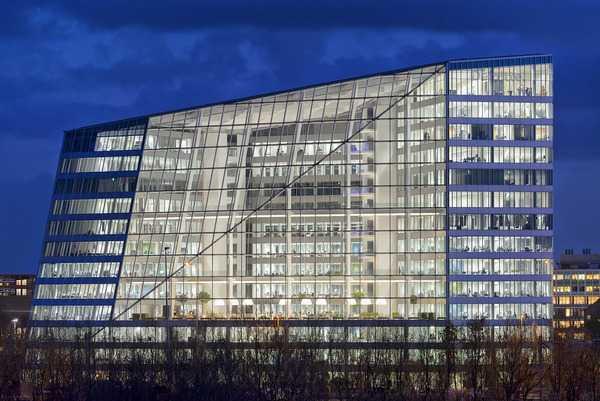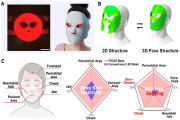The Edge in Amsterdam is a highly sustainable¹ building featuring a high level of intelligence thanks to the innovations and technologies it incorporates. It is the first office building in the world to be equipped with Philips’ innovative connected lighting system for offices based on ‘Power-over-Ethernet’ technology. The connected lighting system receives both power and data over a single Ethernet connection and is able to provide facility managers with an integrated view of a building’s occupancy patterns and energy usage. This enables more informed decision making with unprecedented levels of energy and operational efficiency.
"On top of the energy savings we will get a tremendous insight into how the building is being used from Philips’ connected lighting system. We can actually use the data from the sensors to understand how our people use the building, and how intensively." said Erik Ubels, Chief Information Officer at Deloitte in The Netherlands. "For instance it will help us focus cleaning on the rooms that really need it thus optimizing costs – a room used the whole day for a large meeting with lunch and coffee requires a different level of cleaning than one used for two hours by two people."
 |
|
The Edge in Amsterdam receives a smart LED lighting upgrade. (All photos courtesy of Philips) |
Philips’ PoE-based connected lighting system also allows office users at The Edge to set the lighting and temperature to suit their personal preferences. Via an app on their smartphone employees are able to adjust the temperature and the brightness of the light above their desk, supporting workplace productivity.
Parties involved in The Edge
The Edge is the result of a partnership between OVG Real Estate, Philips and the main tenant Deloitte. It was designed by Ron Bakker and Lee Polisano of PLP Architecture in London. The Edge is owned by Deka Immobilien Investment. Other tenants in the building include AKD, Salesforce, Henkel, Sandvik and Edelman.
Philips connected lighting innovation for offices
When outfitted with sensors, this connected office lighting system is able to capture anonymous data on room occupancy. The LED fixtures connect to the IT network and interface with other building systems such as heating, ventilation and IT services, providing this data to enable more informed decision making for greater operational efficiency.
 |
|
The Edge in Amsterdam shot in the evening, an airplane flies over the building. |
This means that the facility manager has a single system showing real time and historical views of building utilization. For example, he or she could see that on a Friday afternoon a particular floor is not used and adjust the temperature, lighting, and cleaning roster accordingly.
Philips’ connected office lighting system based on Power-over-Ethernet technology can deliver operational efficiency on various building services:
-
Lighting: consumes 40% of a building’s electricity. Philips connected LED lighting offers up to 80% energy savings on the lighting. This equals a reduction of 30% on the buildings total electricity consumption
-
Cleaning: Philips’ PoE-based connected lighting system can reduce cleaning costs for a building by approximately 10% based on occupancy data
-
Space optimization: The lighting equipped with sensors will allow facility managers to better plan space, resulting in an increased space efficiency of at least 20% thanks to real time data.
Standards-based PoE-enabled fixtures also deliver significant cost savings on lighting installation. As these fixtures receive both data and power over a single Ethernet connection, there is no need for expensive electrical wiring, reducing installation costs by at least 25%, (with 87.5% less mains wiring).
²The Edge meets the highest standards of sustainability (certified BREEAM² -Outstanding) which is the highest ranking according to the internationally recognized Building Research Establishment Environmental Assessment Method (BREEAM)





 CN
TW
EN
CN
TW
EN







